Cultivating user empathy in a fast-paced, highly-dynamic start-up
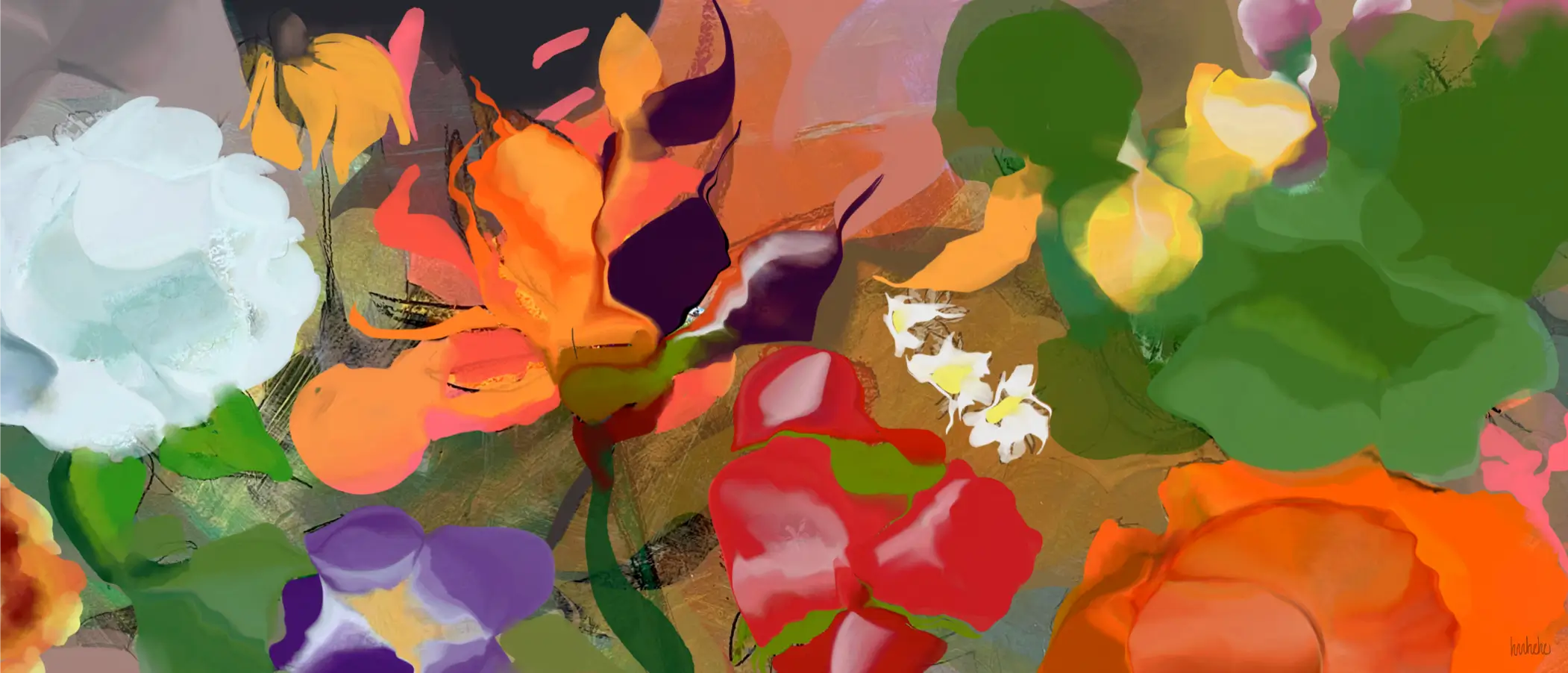
By Hannah Rahr, Sr. UX Designer
Open any job description these days, and you’ll notice a common theme: “ability to thrive in a fast-paced, highly-dynamic, high-pressure, high-stakes environment.” Let’s have a heart-to-heart for a minute – no matter how talented, resilient, or driven you may be, this complex work will test even the coolest of cucumbers and the most energized of bunnies. After all, we are all human. Now layer in the mission of cultivating a culture of user empathy in an environment that catalyzes ruthless prioritization and speed, and you’re faced with a daunting task. To overcome this, the cultivation will require hard work and grit, but it is incredibly important work worth doing.
Guiding principles of empathy cultivation
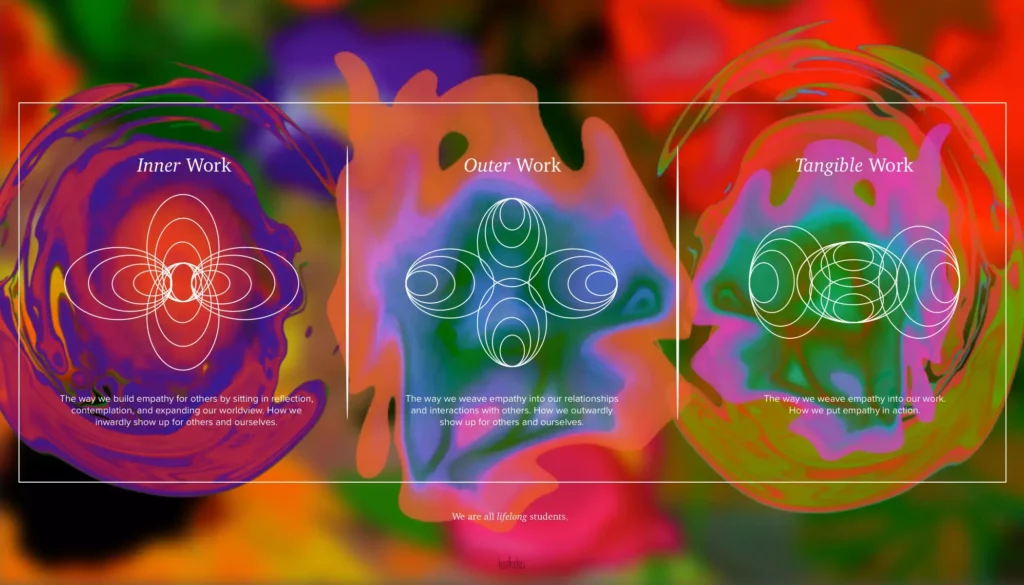
Let’s begin by thinking of empathy cultivation as three verticals: inner work, outer work, and tangible work. This way, we can break our empathy practice into manageable chunks and work on building our skills a little each day,
- Inner Work: The way we build empathy for others by sitting in reflection, contemplation, and expanding our worldview. How we inwardly show up for others and ourselves.
- Outer Work: The way we weave empathy into our relationships and interactions with others. How we outwardly show up for others and ourselves.
- Tangible Work: The way we weave empathy into your work deliverables. How we put empathy in action.
The inner work.
Just as weeds must be removed to prepare the soil for tilling and new growth, we must also remove the weeds in our minds to promote the growth of new ideas and new ways of viewing the world.
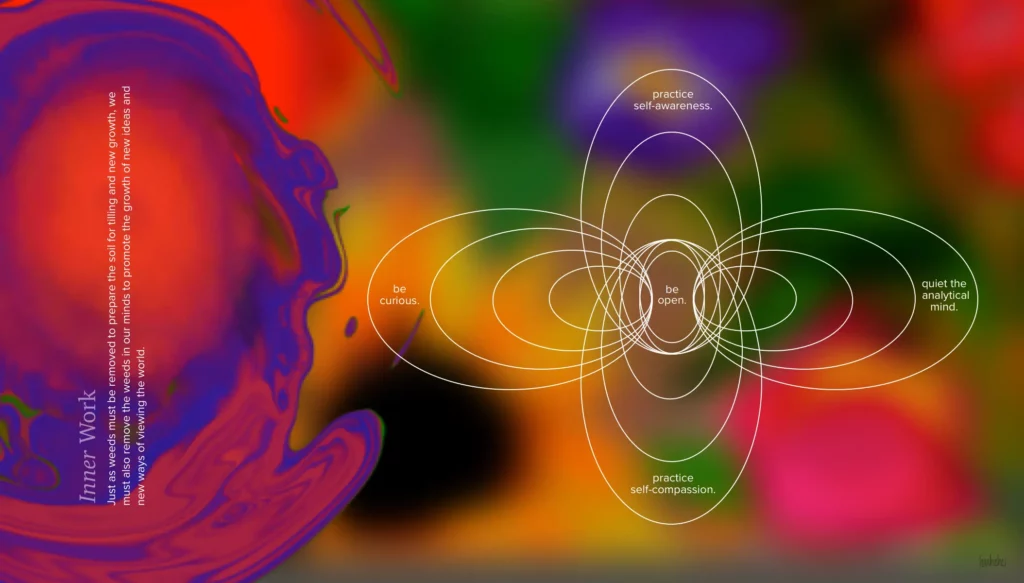
- Be curious about yourself, about others, and the world around you. Consider what you know with conviction, what you know you don’t know, and what you know but may be wrong. Ponder the experiences that have led you here and the empathy gaps they may have formed — no need to judge, just listen with curiosity and be open. Practice this level of interest with friends, family, and the people who use your product. Do this daily.
- Be open to new ideas, perceptions, and ways of seeing and experiencing the world. Practice this level of openness both at work and in your free-time life. Lean into the topics that pique your curiosity and open your brain the most. Once you’re feeling more unfolded, start practicing with issues you don’t understand and viewpoints you struggle to empathize with.
- Quiet your analytical mind. Research shows that analytical thinking and empathetic thinking are rival brain networks. Our ability to tap into our external environment, people, and new ideas is suppressed when we focus on processing, finding solutions, and making decisions – and vice versa. While we cannot be empathetic and analytical simultaneously, we can use both networks in our brains. Practice consciously and intentionally suppressing your analytical thoughts by stepping outside yourself and connecting with others through empathetic thinking.
- Practice self-compassion by going inward. To show up and advocate for our users, we must also show up and advocate for ourselves. New research shows that time away from our screens in recharge mode increases our capacity for creative thinking. Take the time to do the things you love, inspire, and connect with your happiest, healthiest self. Fill your mind with new ideas and new ways of seeing the world. Genuine self-compassion and self-awareness will create fertile ground for empathy toward others to grow.
- Practice self-awareness by becoming acutely aware of the human tendencies that block your capacity to feel empathy for others and self-compassion for yourself. Learn to recognize these tendencies within yourself, so you can gently redirect them. Remember, your experiences have shaped how you view the world and respond to the stimuli around you. Many empathy cultivators and detractors are born from our humanness, including snap judgments, confirmation bias, empathy gaps, and more. It can be uncomfortable to sit with your humanness, but it will only make you a better human to others and yourself.
The outer work
Just as loosened and soft soil is required to receive new plants, our minds must be softened and receptive to new ways of experiencing the world and others. This may require deep tilling initially, but it’s worth the work for next year’s harvest.
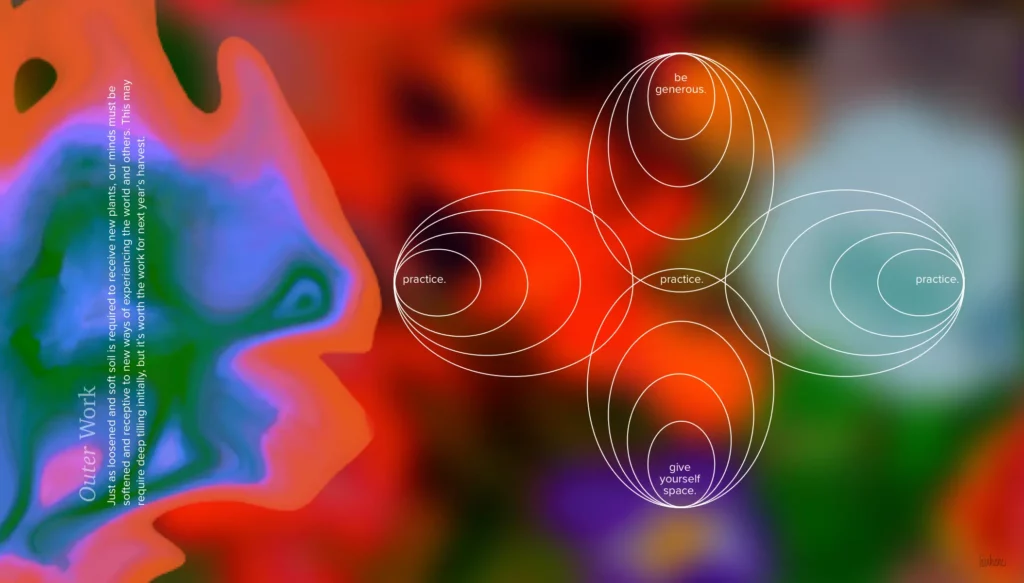
- Be generous with your time, headspace, and presence by listening to understand, not respond. This is where all our inner work becomes crucial – through curiosity, openness, and conscious effort to come from a place of empathy we can begin. It can be difficult not to jump in and take over the conversation, especially if the topic excites you. It can also be challenging to not let your mind wander and fill in the gaps you missed with your own storyline. When that desire pops up, take a deep breath, acknowledge it, and let it pass like a speeding car. Try your very best to not put the focus on yourself. Instead, focus on listening to understand the human in front of you.
- Give yourself space. Austrian psychologist and Holocaust survivor, Dr. Viktor Frankl, described this perfectly, “Between stimulus and response, there is a space. In that space is our power to choose our response. In our response lies our growth and our freedom.” We may not control our thoughts or feelings, but we have control over how we respond. If a snap judgment floats into your mind, or you find yourself filling in another person’s story based on your own experiences, acknowledge it and let it pass by. Similar to the noting technique in meditation, you can also label your thoughts and feelings as a way to recognize their presence and then let them go. Remember, you don’t have to react or take action based on it.
- Practice, practice, practice. Practice empathy rooted in your inner work. Practice with teammates, friends, family, and your dog. Start with topics where empathy comes easy to you, and expand outward to those harder to understand. One of my favorite ways to practice this is through loving-kindness meditation. Building empathy is like a muscle; the more intentionally we train it, the stronger it will become.
The tangible work.
Just as hand tools allow gardeners to loosen the ground without causing damage to the existing plants, we must take extra care as we prepare the soil and plant new seeds.
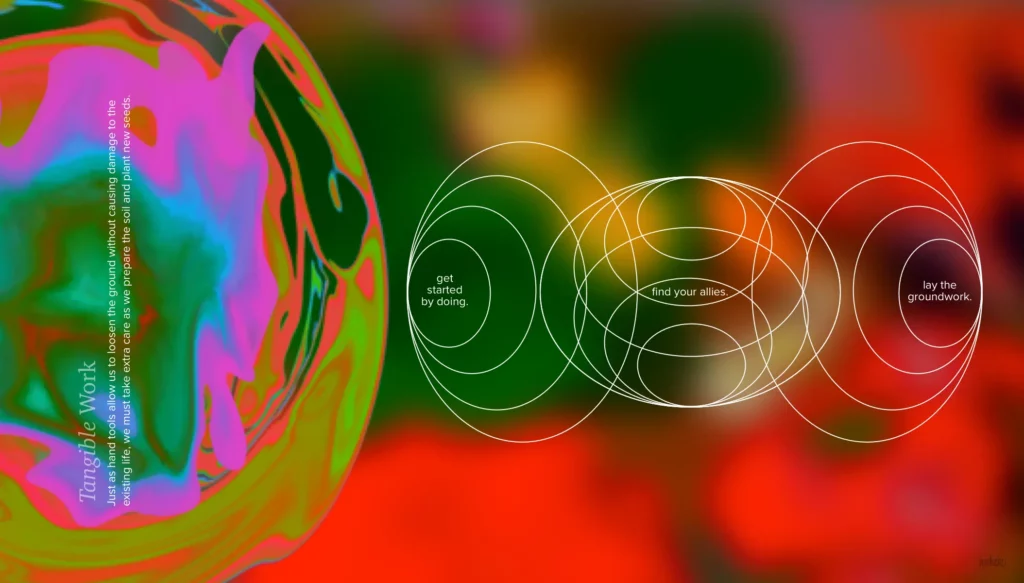
- Get started by doing. Sitting around thinking about how important empathy is doesn’t do anything for the people using your product. As Kaleho Naki, Principal Designer at VideoAmp, always reminds me, “Anything is something!” Start by making those incremental moves toward empathy. You’ll inevitably trip over yourself a few times but learn a lot along the way. You got this!
- Find empathy allies in the teammates who support this effort. Use the projects with your allies to showcase the value of empathy-based design. These supportive environments will help build both confidence and trust with your teammates. The small but mighty empathy seeds you plant will begin to sprout before you know it!
- Lay the groundwork by demonstrating empathy in action. When was the last time you changed your worldview or behaviors because someone said to you that’s what you should do? Probably never because, let’s be real, no one likes to be told what to do or how to think, especially when it requires them to get uncomfortable or put in the extra effort. Root your designs in empathy by providing evidence, research, and value. Here are a few strategies that have worked well here at VideoAmp.
- Embed empathy, psychology, and research into your reviews with stakeholders. It’s important to remember that your stakeholders are approaching your design solutions from an analytical standpoint, which means their empathetic network is suppressed. While it may feel like you are stating the obvious, you are helping activate their empathetic network and cultivating a new perspective. So go ham!
- Create leave-behinds that can act as empathy artifacts. If time allows, create a visual (think one-sheeter, pdf pack, or presentation) to reference during your reviews and hand-offs. Share your empathy artifact after the meeting, and enable the sharing feature so they can distribute when needed. Take time to enjoy the thrill of catching someone new in your document. That means it’s working!
- Turn your hand-off documentation into an empathy artifact. Hand-off documentation isn’t just about measurement, styling, and feature callouts. You can also sprinkle in tidbits documenting the research and empathetic reasoning behind your decisions. I suggest iterating with the different teams you work with (remember your design allies!) to find what works best for your organization and environment. Have an empathy artifact game plan for when you have a lot of time vs. very little time to execute. At VideoAmp, we’ve found great success with various design hand-off templates, but play around to find what works for you!
- Walk-through videos are worth their weight in gold. Trying to get buy-in across multiple stakeholders? Walk-through video. Want to communicate the importance of your empathy-driven decisions? Walk-through video. Want to have an empathy artifact? Walk-through video. Can you tell we’re big fans? Walk-through videos not only allow people to digest and process the information on their own time, but they help craft a clear and articulate story. Bonus Perk: empathy artifact to add to your collection!
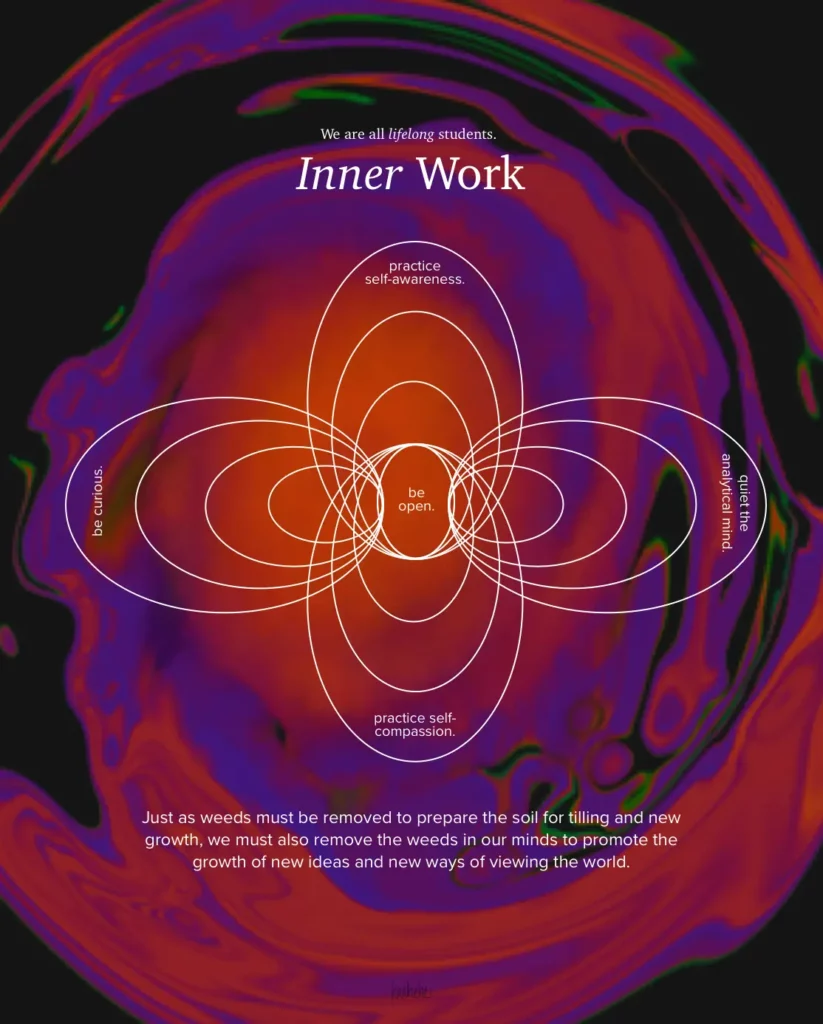
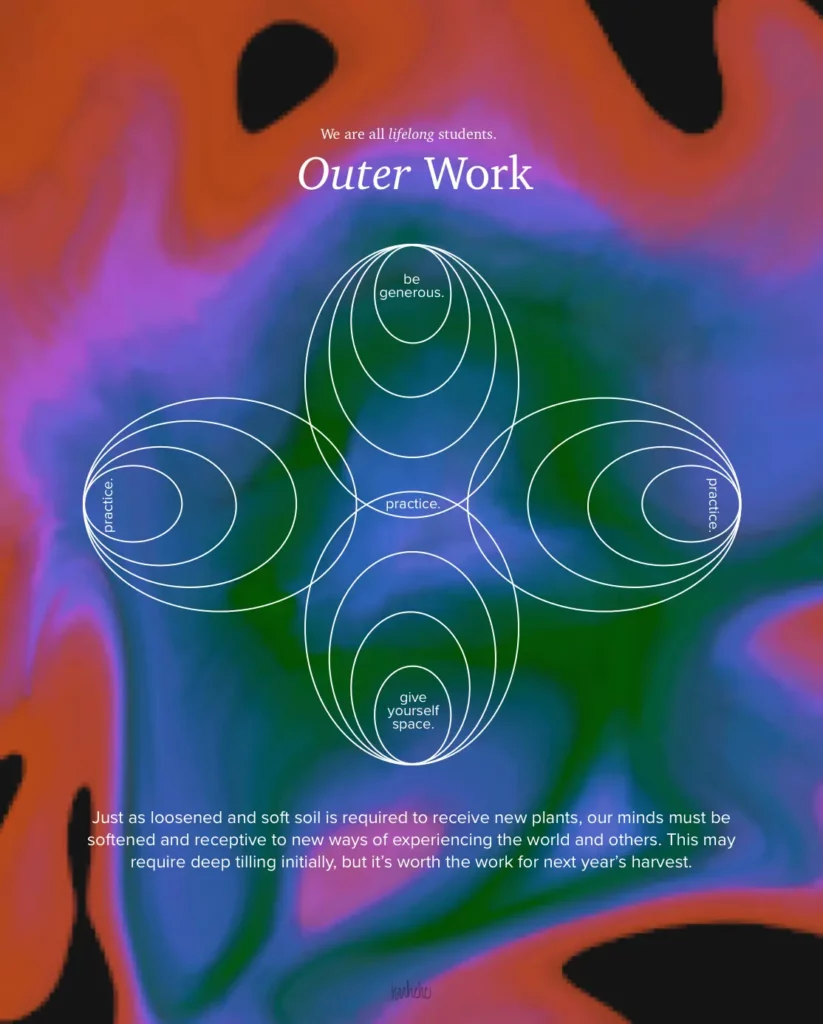
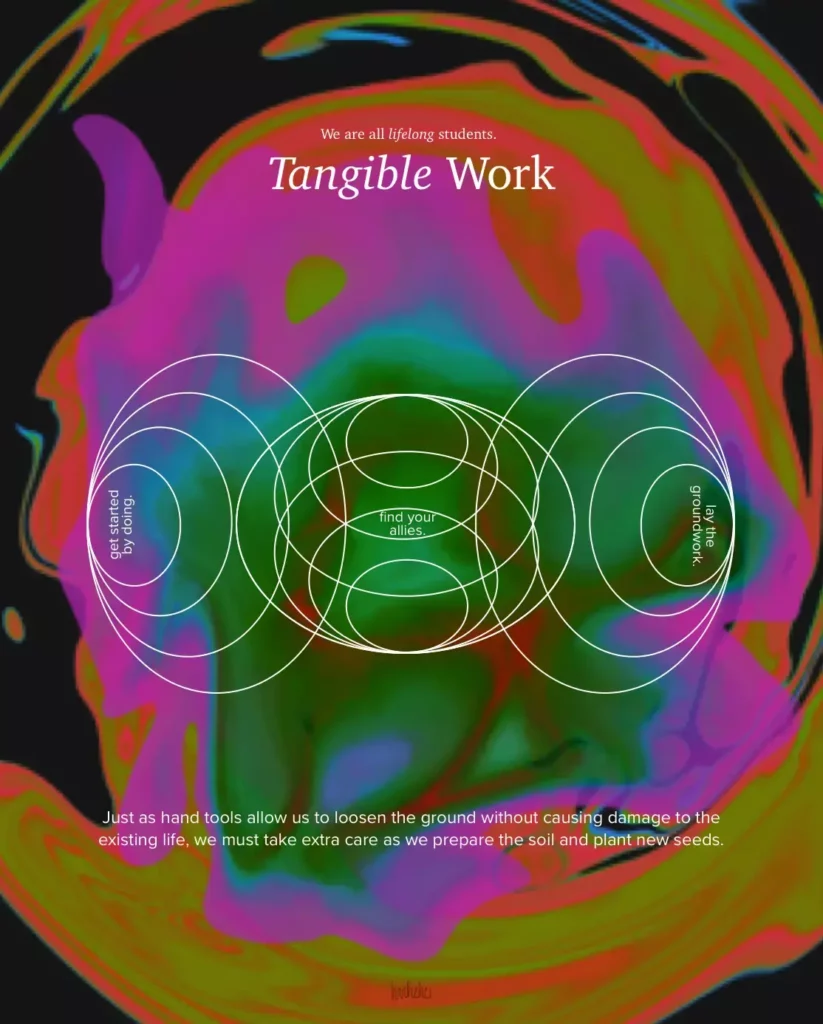
We are lifelong students
Cultivating empathy and self-compassion is an inside job for all of us – whether we’re new to this empathy thing or have been training for a long time. Remember, any significant cultural shift in thinking and behavior will require intentional, focused work, which takes time. Just as you can’t learn a new skill and be immediately perfect, you cannot implement the most ideal empathy practice all at once, and that’s okay. We are all lifelong students of self-compassion and empathy for others.
At VideoAmp, our empathy cultivation has come so far, yet it feels like just getting started! We are actively scaling our grassroots empathy work into a company-wide discipline, and I’m excited about the journey ahead of us and proud of all the work we’ve done so far. I hope you will join us on our journey as we try new things, learn, iterate, and grow together. It may not be perfect, but darn it – we’re out here doing it, and if that’s not the most human thing you can do, I don’t know what is.
Now get out there and do big things!
